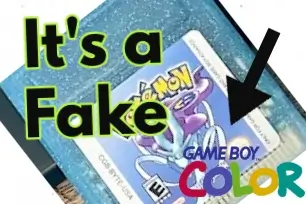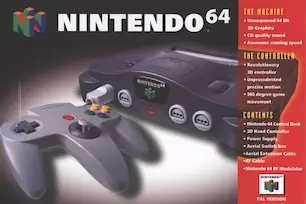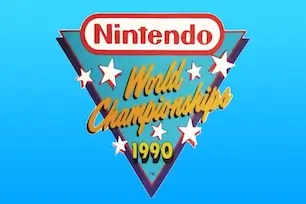Expert Tips: Spotting 5-Screw vs 3-Screw NES Cartridges for Maximum Value.
In 1985, Nintendo released the Nintendo Entertainment System (NES) in North America, forever changing the video game industry. As more people wanted the console, Nintendo quickly released many games for the excited fans.
Back then, just getting your hands on a NES console felt like winning the lottery — and blowing into cartridges to make them work became a daily ritual for gamers everywhere.
During the excitement, not many noticed that early NES cartridges had five screws on the back. This small detail would change as the system evolved.
Today, these screw variations matter a lot to collectors. Let's dive into why Nintendo switched from 5 screws to 3, how to spot the differences, and why it matters for your NES collection.
The Table of Contents
NES Cartridge Screw Timeline
1985–1986: The 5-Screw Era
Most early NES games—especially black box titles and early third-party releases—used five flathead screws. These are easy to open with a standard screwdriver and are prized by collectors as "first print" cartridges.
collectors as "first print" cartridges.
Late 1987 to Early 1988: 3-Screw Flathead Transition
Nintendo began cutting costs by switching to three screws instead of five. During this brief transitional phase, they still used flathead screws. These 3-screw flathead carts are less common and often overlooked oddities in the collector world.
Mid-1988 and Beyond: The Gamebit Standard
Nintendo adopted 3 security bit (Gamebit) screws—a tamper-resistant design that requires a special tool to open. This version became the long-term standard for NES cartridges until the end of the console's production.
What Are 5 Screw NES Cartridges? (vs 3 Screw Explained)
The first NES cartridges made for the U.S. market from 1985 to late 1987 had five flathead screws on the back. There was one screw in each corner and one in the center.
- This design closely resembled the original Japanese Famicom cartridge construction.
- Unlike later games, 5-screw cartridges use standard flathead screws, not specialized "security screws," making them easier to open.
- The front of these early games often featured the black "Nintendo Seal of Quality" with more detailed text than later revisions.
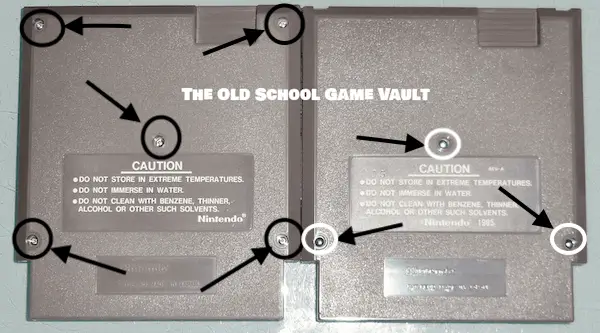
Why Did Nintendo Replace 5 Screw NES Cartridges with 3 Screws?
By late 1987, Nintendo started to change the design of their game cartridges. The new design had only three screws instead of four. They replaced the two screws at the top corners with molded plastic tabs. This change helped reduce production costs.
At the same time, the other screws were replaced with special security screws. These screws need a unique tool to remove, which makes it harder for unauthorized repair shops or pirates to mess with Nintendo's products.
Nintendo did not officially announce this change, but the reason is simple. Removing two screws from each cartridge saved a lot of money. Adding special screws made the cartridges safer and stopped people from making unauthorized changes.
This change also made manufacturing more efficient. With fewer parts, assembly became faster and cheaper. In 1989, Nintendo changed the Seal of Quality. They moved from a black label to a simpler white-and-gold design. It is important to remember that the changes to the screws and the seal were separate updates.
According to retro gaming writer Retro Room on Steemit, “Five screw cartridges were typically released during the first year or two of the NES console’s life in the United States. They are considered more rare and collectible because of this.”
Do All 5-Screw NES Cartridges Have Hidden Famicom Adapters?
You may have heard that some early NES games contain hidden Famicom-to-NES adapters inside the cartridge — and that’s true, but only for a handful of launch titles like Gyromite and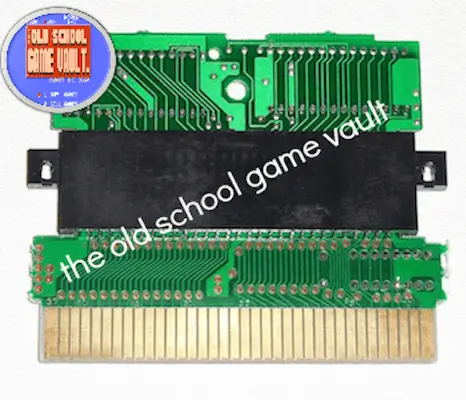 Excitebike.
Excitebike.
- These adapters were used during the NES launch to repurpose Famicom boards for the U.S. market. However, the vast majority of 5-screw games do not contain an adapter.
Curious about those hidden Famicom adapters inside early NES carts? We recently published a detailed guide explaining how and why Nintendo included these adapters during the NES launch. → Check out our Famicom Adapter Guide here.
Why 5 Screw NES Games Matter to Collectors
There are two main reasons collectors seek out 5-screw variants:
- Historical Value:
- The earliest NES games often came in 5-screw form, giving them extra appeal as "first prints" for hardcore collectors.
- Rarity:
- In many cases, 5-screw versions are less common than 3-screw versions.
- Certain game titles, particularly those with longer availability, are offered in various formats. Nonetheless, the 5-screw editions often fetch higher prices.
Even though the functional difference is minor, these small details make a big impact in the retro gaming market.
If you want to learn more about early NES production variants, check out the guide from Wata Games. It provides helpful tips for identifying first-print "black box" games.
The Value Behind the Screws: A Real Market Example
Collectors often ask: Does the number of screws on an NES cartridge really affect the value? The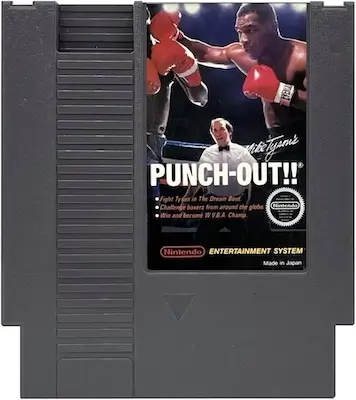 answer is a definite yes — and here’s a prime example.
answer is a definite yes — and here’s a prime example.
- “The largest price change I have noticed for a Nintendo NES game is Mike Tyson's Punch-Out!!. Early 5-screw versions can sell for about $250 if they are loose cartridges.
- In contrast, the more common 3-screw versions typically sell for around $47.,” says Brandon Perton, a longtime NES collector and founder of The Old School Game Vault.
This price gap isn’t just about age — it's about rarity, historical context, and collector demand. The 5-screw version was made in the game's first production run.
After that, Nintendo changed the design to a 3-screw cartridge. Because of this, the 5-screw copies are much harder to find now.
How to Spot 5 Screw vs 3 Screw NES Cartridge Screws
- Flip the cartridge over and count the number of NES screws.
- 5-Screw: One screw in each corner + one in the center.
- 3-Screw: One at the bottom left, bottom right, and center — with snap tabs at the top corners.
List of NES Games with 5 Cartridge Screws
There are dozens of titles known to exist in 5-screw form.
For a full list, you can check resources like PriceCharting’s 5-Screw NES Guide.
Notable examples include:
- Super Mario Bros.
- The Legend of Zelda
- Castlevania
- Metroid
- Mike Tyson's Punch-Out!!
- Excitebike
- Duck Hunt
- Ghosts 'n Goblins
And many more.
If you're interested in learning even more about early NES production variants, don't miss our NES First Print Guide, where we break down first-print run indicators across dozens of classic titles.
How to Open NES Cartridges (5 Screw & 3 Screw Removal Guide)
If you want to open an NES cartridge:
- 5-Screw games can usually be opened with a simple "smaller" flathead screwdriver.
- “I still remember going to Home Depot with my copy of an NES game in hand. I was in the tool aisle testing out small screwdrivers until I found one that fit the screws just right." says Brandon Perton from The Old School Game Vault.
- 3-Screw games require a 3.8mm gamebit tool to remove the security screws. Which you can find on eBay or Amazon for under $5.
If you find rusty screws, you can use some penetrating oil. This will help loosen them. Be sure to use a steady hand to avoid damaging the cartridge.
- "Many times, if you encounter a rusty screw, it means some moisture got on the cartridge at some point. I always suggest checking the internal game board and the pin connectors. They can rust too," says Brandon Perton, owner of The Old School Game Vault.
🕹️ Fun Fact: The Nintendo Seal of Quality also evolved alongside cartridge manufacturing changes. If you want to learn more about how to tell the difference between early and late NES releases by looking at the seal design, check out our Complete NES Seal Guide.
FAQ's About NES Cartridge Screws
What are 5 screw NES cartridges?
- 5 screw NES cartridges were the earliest Nintendo Entertainment System games released in North America.
- They used five flathead screws on the back—one in each corner and one in the center—making them easy to open. These versions are considered more collectible because they represent first print runs from 1985 to 1987.
What is the difference between 5 screw and 3 screw NES games?
- The main difference between 5 screw vs 3 screw NES games lies in their cartridge construction.
- 5-screw games have five flathead screws, while 3-screw games use three Gamebit security screws with plastic snap tabs at the top.
- The 5-screw versions are often earlier prints and more valuable to collectors.
Why did Nintendo switch from 5 screws to 3 screws on NES cartridges?
- Nintendo switched to 3 screw NES cartridge designs in late 1987 to reduce manufacturing costs and improve tamper resistance.
- The updated design used molded plastic tabs at the top and three security screws instead of five flathead screws.
Do all 5 screw NES cartridges have Famicom adapters inside?
- No, only a few 5 screw NES cartridges—mostly early launch titles like Gyromite and Excitebike—contain hidden Famicom-to-NES adapters.
- The majority of 5-screw cartridges do not include internal adapters.
Are 5 screw NES games worth more than 3 screw versions?
- Yes, 5 screw NES games are often worth more because they are older, rarer, and represent the first production runs.
- For example, a 5-screw copy of Mike Tyson’s Punch-Out!! can sell for $250+, while the 3-screw version typically sells for under $50.
Are you interested in buying or selling NES games?
Whether you are looking for rare five-screw versions, classic NES games, or building your retro game collection, we are here to help you.
game collection, we are here to help you.
At The Old School Game Vault, we specialize in buying and selling authentic retro games, systems, and accessories.
Trusted by collectors for over 30 years
Ready to level up your NES collection?
Visit our store to receive a quick quote today.
Feel free to share your thoughts!
Are you a proud NES collector? Share your favorite 5-screw games in the comments below! If you’re interested in learning more about retro gaming, subscribe to our newsletter for more insights and tips on building your collection.




